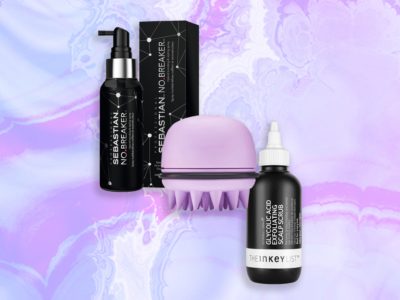
The outpatient procedure, known as a lower lid blepharoplasty, reduces, removes, or repositions bulging fat of the lower eyelids. “The fat compartments of the lower eyelid can be approached and treated through an inconspicuous incision inside the eyelid, known as a transconjunctival blepharoplasty, that leaves no visible external scar,” explains Adam Kolker, a board-certified plastic surgeon in New York City. (Kolker did not perform my procedure.)
After 10 days of bruising that left me looking as if I had gone a few too many rounds in a boxing ring, the bags under my eyes were gone. For me, the procedure was an integral part of healing. It was an act of optimism.
Easing Into Treatment Options
Not everyone, of course, wants or needs plastic surgery after facing a loss. In fact, Kolker recommends an incremental approach. “The duration and sequence of the grieving process is different for everyone. When you feel ready to re-engage, start slowly,” he says. “At first, only at-home treatments should be considered. Fitness, nutrition, hydration, and a proper skin-care regimen (cleanser, antioxidant serum, moisturizer) should be resumed. Specifically, antioxidants and peptide products could be most helpful.”
Anolik agrees with these ingredient recommendations. “Antioxidants reduce the impact of free radical damage to the skin DNA, allowing for healthier development and consequently more beautiful skin,” he explains. “Peptides, on the other hand, are fragments of proteins that can sink into the skin surface and are capable of triggering specific skin functions to promote new collagen production.”
Following that, in-office procedures can be an effective and less-invasive option than surgery. Injectable neuromodulators such as Botox can treat furrowed brows, while fillers including Restylane and Juvederm can add volume and plump the skin.
Carrieanne Richard recently lost her brother to cancer, and the constant worry left its mark on her face. “I’m in my 20s, but I had wrinkles in my forehead, which probably got worse from not eating and sleeping,” she says. She went to Kolker for Botox. “It was something I knew I would do at some point, but this expedited it.”
While no injectable can heal the pain of losing someone, it gave her back a sense of confidence. “I went from looking tired all the time to looking more alert and calmer,” she says.
Facing the Future With Confidence
After my mother and brother died, I sought treatment for post-traumatic stress disorder (PTSD) and slowly I began to sleep again. I started exercising and eating healthier, but my face didn’t get the memo. No matter what I did, I looked exhausted, with loose, dull skin and jowls around my mouth. I was finally ready to seek help for the outside just as I had for the inside. I had no desire to look like someone else, but rather who I had been before the last two years had done such damage. (OK, yes, maybe just a wee bit better.)





